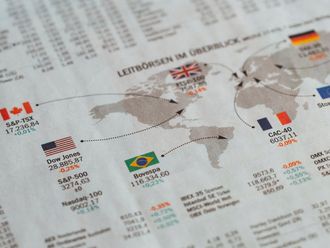Dubai: UAE banks are likely to face a second wave of deleveraging next year with additional corporate restructurings likely to increase their non-performing loans, leading rating agencies have cautioned.
"In the UAE, we expect to see continued deleveraging or a very limited [loan] growth scenario for the major Dubai banks in 2012. This is because these institutions are largely focusing on managing their existing exposures, owing to their pronounced asset quality issues," said Timucin Engin, associate director, Rating and Analytical, Financial Services at Standard & Poors.
Moody's Investor services said in a recent outlook report that in addition to the legacy NPLs, banks in the country, particularly those from Dubai, could face a surge in bad loan provisions as more firms are likely to announce restructuring exercises next year.
"Large distressed exposures of government-related entities [GREs] will continue to push up system-wide non-performing loans [NPLs]. We expect that NPLs will peak next year in Dubai at around 13-15 per cent and this year in Abu Dhabi at [a] lower level of around 8-10 per cent," said Nicolas Charnay, an associate analyst with Moody's.
Refinancing
Analysts also expect the absence of European banks in the loan market, combined with high volatility in the global bond markets, to force many local entities to seek refinancing of their upcoming maturities through local banking channels.
"Our bank equity research team believes the domestic banking sector could handle 2012 loan refinancing should international banks not participate in the rollover. But it could push up NPLs of the local banking sector," said Jean-Michel Saliba, an economist with Bank of America Merrill Lynch.
S&P said in 2010 that UAE banks will continue to focus on managing their existing exposures, owing to their pronounced asset quality issues. While credit growth in Dubai is expected to be flat, single digit growth for the sector as whole will be generated largely by Abu Dhabi banks.
Core strengths
Improved loan-to-deposit ratios and high capitalisation levels are seen as the core strengths of the UAE banking sector. With low external borrowing levels, rating agencies said banks' own refinancing requirements are manageable.
"The banking system's net external borrowings have fallen over the past few years and we believe the refinancing requirements of the local banks are largely manageable, particularly for Abu Dhabi institutions," Engin said.
Analysts also believe banks could face future asset quality challenges from restructured loans.
"The banks now carry substantial amounts of restructured loans on their balance sheets and the performance of these will be an important factor in their future asset quality as well as their exposures to certain GRE names," Engin said.
For Gulf banks as a whole, S&P does not expect any meaningful changes in either the overall lending appetite or loan pricing as a result of the new capital requirements under Basel III.
"We believe that banks will generally not need to increase their capitalisation because their current capital levels are already significantly higher than the new Basel III requirements and the composition of bank capital in the GCC is generally of high quality," said Stuart Anderson, S&P's managing director and regional head, Middle East.
In S&P's recently revised Banking Industry Country Risk Assessments (BICRAs), the rating agency classified Bahrain's banking system in Group 6, which is the highest risk among the GCC countries, ahead of the UAE (Group 5), Oman, Qatar, and Kuwait (Group 4) and Saudi Arabia (the strongest, in Group 2).
Limited growth
"We believe that credit growth will be very limited for Bahrain's banks in 2012.
"We anticipate that they will continue to focus on their funding and liquidity and asset quality very cautiously, given the political uncertainties," Engin said.
S&P in its revised outlook has observed that certain Kuwaiti banks are beginning to see early signs of their asset quality stabilising.
They have strengthened their capital levels over the past two years, and the local market funding conditions are more favourable, S&P said.
The agency said it expects see a gradual improvement in Kuwaiti banks' operating environment in 2012.












